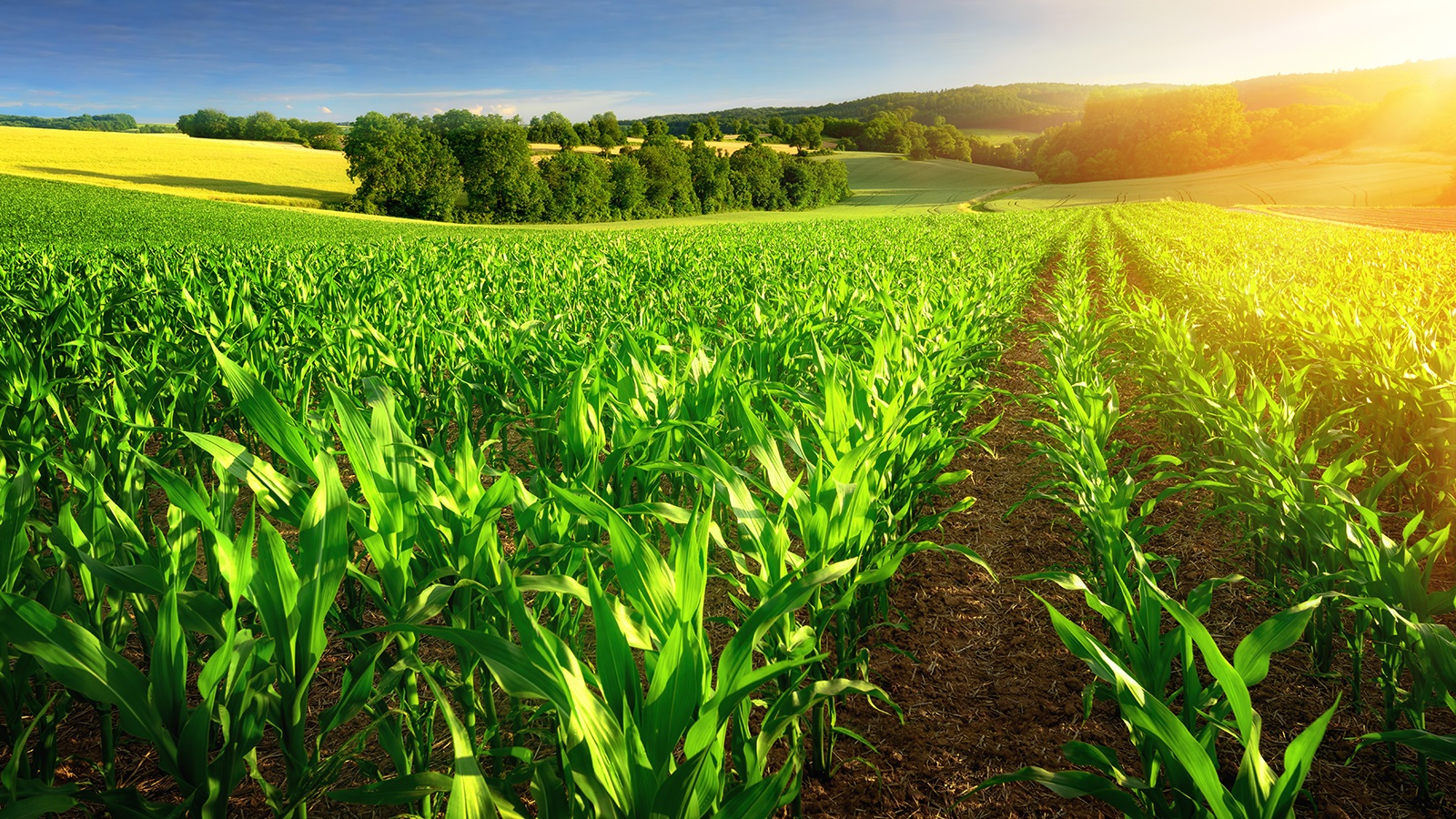Argonne researchers quantify how to reduce emissions by farms changing their practices and adopting novel technologies.
Currently, the agriculture sector contributes significantly to the greenhouse gas (GHG) emissions in the United States, accounting for nine percent of the nation’s overall GHG emissions. The practices that grain farmers use to produce their crops — managing fertility, tillage practice and crop rotations — influence the overall carbon footprint of U.S. agriculture. By using sustainable practices, farmers could substantially reduce their carbon footprint and become a vital partner to the biofuel industry in its efforts to produce the lowest carbon fuels possible.
“This work is unique since we provide a complete quantification of carbon intensity (CI) for the cradle-to-farm-gate activities by conducting scenario-based analysis for selected farming practices that uses regionalized life cycle inventory data and a spatially explicit soil organic carbon modeling tool.” — Xinyu Liu, postdoctoral appointee
A recent study by researchers in the Energy Systems division at the U.S. Department of Energy’s (DOE’s) Argonne National Laboratory quantified how much farms might reduce emissions by changing their practices and adopting novel technologies. Xinyu Liu, a postdoctoral appointee, wrote about the pivotal research in Environmental Research Letters, published on July 20. She collaborated with Hoyoung Kwon, principal environmental scientist, and Michael Wang, manager of systems assessments, all of Argonne; and Daniel Northrup, a former contractor to DOE’s Advanced Research Projects Agency-Energy (ARPA-E), now with Benson Hill, a crop improvement company in St. Louis.
“This work is unique since we have quantified how the carbon intensity (CI) of corn feedstock would change with a wide range of farming practices and different farming regions. Besides the GHG emissions from manufacturing and applying farming inputs, we have also considered the impacts from soil organic carbon,” said Liu.
The research focused on the corn belt of Illinois, Indiana, Iowa, Minnesota, Nebraska, Ohio, Michigan, South Dakota and Wisconsin and showed how different farming practices affect feedstock CI. Sustainable farming professionals could implement lower CI practices, such as adopting conservation tillage, reducing nitrogen fertilizer use, and implementing cover crops, to reduce their carbon footprint, which could improve farm efficiency and help the environment.
The Argonne team’s research has historically focused on the CI of biofuels, which is determined via the life-cycle analysis technique to account for the energy/material uses and emissions as feedstock is produced and converted to fuel. The technique is used by California Air Resources Board’s Low Carbon Fuel Standard (LCFS) program to calculate biofuel CI. Farms that reduce biofuel CI can generate LCFS credit, which has monetary value for biofuel producers and potentially for farmers supplying the lower carbon feedstocks. Biofuel producers can improve their overall CI score by rewarding feedstocks with lower CI, thereby further reducing the total CI of biofuels.
Currently, LCFS allows applications from individual biofuel conversion facilities, which resulted in significant investment and innovation in production processes to reduce CI. However, the board scores the CI for feedstocks based on a national average, regardless of the significant field-level variations in CI based on production practice. The Argonne work determines the source of the variation and suggests that a change in farming practice would lead to major emission reductions if implemented broadly.
“We conducted scenario-based CI analysis of corn ethanol, coupled with regionalized inventory data, for various farming practices to manage corn fields and identified key parameters affecting cradle-to-farm-gate GHG emissions,” said Liu. “The results demonstrate large spatial variations in CI for corn, and eventually for ethanol, due to farm input uses and land management practices.”
This work shows the importance of different sustainable farming practices to reduce CIs of feedstocks such as corn, which can eventually benefit biofuels.
“Large CI variations in feedstock can result from different farming practices and chemical uses,” said Liu. “Therefore, a field-level analysis is needed to better inform farmers to increase crop yields with reduced farming inputs, thus resulting in CI reductions.”
This research was supported by ARPA-E.
Argonne National Laboratory seeks solutions to pressing national problems in science and technology. The nation’s first national laboratory, Argonne conducts leading-edge basic and applied scientific research in virtually every scientific discipline. Argonne researchers work closely with researchers from hundreds of companies, universities, and federal, state and municipal agencies to help them solve their specific problems, advance America’s scientific leadership and prepare the nation for a better future. With employees from more than 60 nations, Argonne is managed by UChicago Argonne, LLC for the U.S. Department of Energy’s Office of Science.
The U.S. Department of Energy’s Office of Science is the single largest supporter of basic research in the physical sciences in the United States and is working to address some of the most pressing challenges of our time. For more information, visit https://energy.gov/science.
Original post https://alertarticles.info
